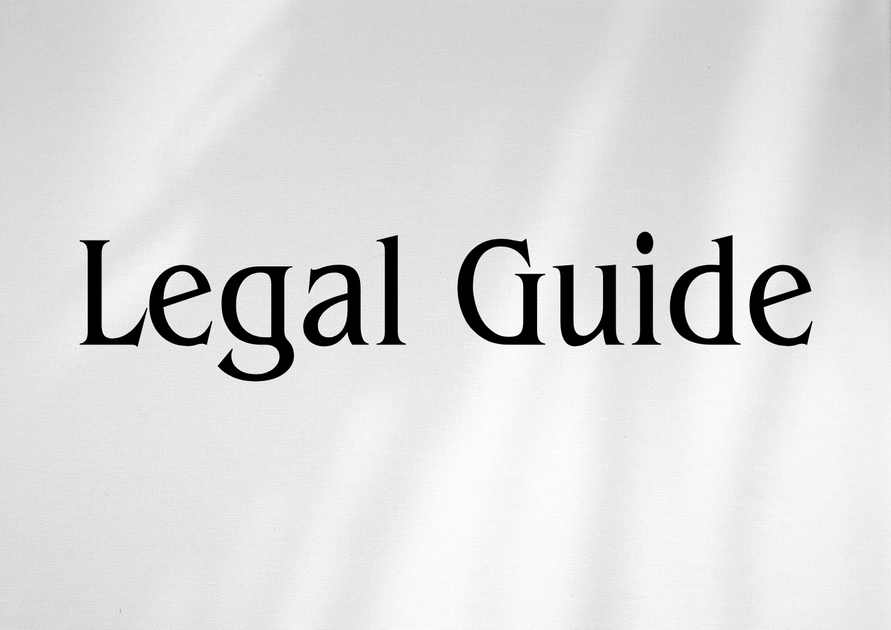Introduction: Navigating Qatar’s Foreign Investment Law – An Essential UAE Perspective
In a competitive and rapidly evolving Gulf economy, Qatar’s foreign investment framework has become an essential subject for companies, executives, and legal practitioners operating in the United Arab Emirates. With Qatar enacting pivotal amendments to its foreign investment law—most notably through Law No. (1) of 2019—there is growing cross-border attention towards how foreign entities can benefit, comply, and strategically expand in the Qatari market. Not only does this legislation impact market entry decisions, but it also guides partnership structures, operational risk, and compliance obligations.
This detailed guide provides professional analysis of Qatar’s Foreign Investment Law, with a focus on the 2019 reforms and their relevance to UAE-based stakeholders. Drawing on official sources and consultancy practice, we examine practical pathways for maximizing opportunity while minimizing legal risk, all within the context of current UAE law and compliance standards (including Federal Decree-Law No. 26 of 2020 and the Cabinet Resolution No. 16 of 2020). This is not merely an academic overview, but a resource designed for in-house legal counsels, corporate decision-makers, and consultants tasked with fostering regional growth—while remaining fully compliant with both local and cross-border regulations.
Table of Contents
- Understanding Qatar’s Foreign Investment Law: Landscape and Key Objectives
- Legal Framework and Key Provisions
- Comparative Insights: Qatar and UAE Foreign Investment Laws
- Entry Structures and Licensing Procedures
- Foreign Ownership and Sector-Specific Regulations
- Taxation, Incentives, and Profit Repatriation
- Compliance, Risks, and Enforcement
- Practical Case Studies and Hypotheticals
- Strategic Recommendations for UAE Investors
- Conclusion and Forward Outlook
Understanding Qatar’s Foreign Investment Law: Landscape and Key Objectives
Qatar’s Economic Ambitions and the Role of Foreign Investment
Qatar’s Foreign Investment Law is directly aligned with its National Vision 2030, a government-driven plan to diversify the country’s economy and foster a robust, investor-friendly environment. The landscape has changed markedly since the passing of Law No. (13) of 2000, with the recent Law No. (1) of 2019 standing out for its liberalization of ownership requirements and introduction of investor protections. For UAE-based businesses seeking a stable entry point into Qatar’s market, understanding the rationale and framework of this law is essential.
Key Objectives of the Reforms
- Diversify economic participation outside the hydrocarbon sector
- Enhance foreign investor confidence through clear, enforceable legal frameworks
- Increase the ease of doing business and reduce bureaucratic bottlenecks
- Align with international best practices for investor rights and dispute resolution
Legal Framework and Key Provisions
Principal Laws and Regulatory Bodies
The legal bedrock for foreign investment in Qatar includes:
- Law No. (1) of 2019 Regulating Non-Qatari Capital Investment in Economic Activity (the “Foreign Investment Law”)
- Law No. (13) of 2000 (now superseded but relevant for historical comparison)
- Ministerial Resolutions and sector-specific regulations
- Qatar Financial Centre regulatory framework (law parallel for specialized entities)
The main regulatory body is the Ministry of Commerce and Industry (MOCI), alongside sector regulators for banking, insurance, and finance.
Core Provisions: Scope, Rights, and Approvals
| Element | Law No. (13) of 2000 | Law No. (1) of 2019 |
|---|---|---|
| Maximum Foreign Ownership | Up to 49% (general rule) | Up to 100% (subject to approval and sector exclusion) |
| Approval Process | Stringent, limited to specific sectors | Streamlined, more inclusive, subject to MOCI approval |
| Sector Exclusions | Broad exclusions (insurance, banking, real estate, etc.) | Fewer exclusions; critical sectors remain reserved |
| Land Ownership | Not permitted | Permitted for project-related needs, subject to Cabinet approval |
| Investor Protections | Basic guarantees | Comprehensive rights incl. repatriation, equal treatment |
Visual suggestion: A side-by-side comparison chart of key law features for instant readability.
Ministerial Guidelines and Practice
Under the new regime, MOCI has introduced application processes that are both digitized and subject to defined timelines. While most economic activities are now eligible for 100% foreign ownership, certain sectors remain protected due to national strategic or security interests.
Official sources:
- Qatar Ministry of Commerce and Industry (moci.gov.qa)
- Qatar Legal Portal (almeezan.qa)
Comparative Insights: Qatar and UAE Foreign Investment Laws
Key Similarities and Divergences
The UAE has also enacted sweeping changes, notably the Federal Decree-Law No. (26) of 2020 amending the Commercial Companies Law (Federal Law No. (2) of 2015) and Cabinet Resolution No. (16) of 2020. Like Qatar, the UAE now generally permits 100% foreign ownership for onshore companies in non-restricted sectors.
| Provision | Qatar | UAE |
|---|---|---|
| General Foreign Ownership Limit | 100% (subject to approval) | 100% (majority of activities) |
| Sectoral Exemptions | Finance, banking, insurance, etc. | Strategic sectors (defense, oil, utilities) |
| Approval Authority | MOCI (and sector regulators) | Department of Economic Development (DED), various |
| Free Zones | Qatar Science & Technology Park, QFC | Multiple economic and free zones |
| Land Ownership | Case-by-case, Cabinet approval | Permissible in free zones (some restrictions onshore) |
| Investor Rights | Explicit legal protections (equal treatment, repatriation) | Explicit and expanded under recent amendments |
Suggested visual: A Venn diagram showing overlapping and distinct features of the two regimes for UAE firms evaluating market expansion.
Practical Takeaway for UAE Entities
Entities from the UAE should note that while the legal evolution in both states reflects a drive toward openness, nuanced compliance obligations persist, particularly regarding sectoral exclusions and approval processes. As the legal landscape in both jurisdictions continues to evolve in line with “UAE Law 2025 updates” and Qatar’s vision, ongoing legal analysis and pre-entry diligence remain vital.
Entry Structures and Licensing Procedures
Business Structure Options
- Limited Liability Company (LLC)
- Branch of Foreign Company
- Commercial Agency arrangements
- Entities within Qatar Free Zones or the Qatar Financial Centre (QFC)
The LLC, under the 2019 law, is the most common vehicle for foreign ownership, now eligible for up to 100% foreign equity subject to MOCI approval. Branch openings remain tightly regulated, often necessitating government contracts or specific sector activity.
Licensing Application Process – Step-by-Step
- Identify the business activity and confirm eligibility under the latest sectoral guidelines.
- Prepare necessary documentation, including feasibility studies, legal charters, and shareholder information.
- Submit an application to MOCI or the relevant free zone authority.
- MOCI evaluates based on economic contribution, technology transfer, and compliance with public interest.
- If approved, company registration and license issuance.
Processing times, documentation requirements, and approval criteria may differ based on the activity and nature of the foreign investor, necessitating specialist consultancy input.
Foreign Ownership and Sector-Specific Regulations
Sectors Open to 100% Foreign Ownership
Under Law No. (1) of 2019, foreign investors can own 100% of businesses in most sectors. The key areas open to full ownership typically include:
- Manufacturing (except within list of excluded Dangerous Industries)
- Agriculture and fisheries
- Tourism and hospitality
- Healthcare and education
- IT and technical services
Sectors with Restrictions or Additional Approvals
Certain industries retain caps or require additional regulatory clearance, often at Cabinet level or by specialist regulators (e.g., the Qatar Central Bank):
- Banking and Insurance
- Commercial Agencies
- Security and Defense
- Exploration and extraction (hydrocarbons, national resources)
For these sectors, the maximum foreign ownership limit remains 49% unless a specific exemption is granted. Understanding these nuances is critical for risk management and strategic business planning.
Taxation, Incentives, and Profit Repatriation
Corporate Taxation Overview
Qatar imposes a 10% flat corporate tax rate on foreign-owned entities’ business profits, with double-taxation treaties in place with over 70 countries, including the UAE. This has major implications for regional tax planning and financial modelling.
Key Investor Incentives
- Full repatriation of profits and capital
- Guarantees against expropriation without adequate compensation
- Reduced customs duties on imported machinery and raw materials
- Potential for land allocation at subsidized rates (subject to Cabinet approval)
Practical Tax Planning – Example
Consider a UAE-headquartered manufacturer planning a Qatari subsidiary. By utilizing the Qatar-UAE double tax treaty and leveraging 100% foreign ownership (as approved by MOCI), the group can repatriate profits effectively, while responsibly managing tax exposure. However, careful structuring is needed to avoid compliance pitfalls and maximize incentives.
Compliance, Risks, and Enforcement
Principal Risks of Non-Compliance
Compliance breaches can arise from:
- Unauthorized engagement in restricted sectors
- Failure to obtain or renew appropriate licenses
- Misrepresentation of ownership structures
- Environmental or labor law violations
- Breach of local content or Qatarization requirements
Penalties may include substantial fines, forced divestment, license suspension, and even criminal liability for egregious misrepresentation or fraud.
| Offence | Potential Penalty |
|---|---|
| Engaging in restricted activity | Up to QAR 500,000 fine, forced closure |
| Unapproved foreign ownership | Mandatory restructuring, possible criminal charges |
| License lapses | Fines and business suspension until compliance |
Suggested visual: A compliance risk heat map or penalty matrix for business leaders.
Best Practice Compliance Strategies
- Engage local counsel for sector eligibility review pre-application
- Comprehensive legal due diligence on proposed activities and partners
- Implement robust internal compliance systems (licensing, reporting, labor)
- Routine audits and legal updates based on MOCI and sector regulator advisories
Practical Case Studies and Hypotheticals
Case 1: HR Manager Navigating Healthcare Entry
A UAE-based healthcare group seeks to establish a 100% foreign-owned subsidiary in Doha. After confirming activity eligibility, it seeks MOCI approval, submitting detailed financials and business plans. Within eight weeks, approval is granted. Key legal checkpoints include employee compliance with Qatar’s labor law (Law No. (14) of 2004) and correct visa sponsorship structures for clinical professionals.
Case 2: Multinational Manufacturer in Restricted Sector
A leading UAE industrial enterprise targets expansion into Qatar’s insurance sector. Despite recent liberalization, insurance remains restricted to 49% foreign ownership. The company must partner with a local Qatari entity—typically structured as a joint venture—to remain compliant, with enhanced regulatory scrutiny throughout the licensing phase.
Case 3: Remediation After Compliance Breach
An international logistics company incorrectly listed its Qatari branch as 100% foreign-owned in a restricted sector. MOCI issues a compliance notice with a 30-day remediation deadline. Immediate corrective action is taken—reallocating shares and updating corporate documents—to avoid penalties and demonstrate good faith compliance.
Visual suggestion: Process flow diagram illustrating compliance escalation and remediation process.
Strategic Recommendations for UAE Investors
Practical Tips for Entry and Operations
- Conduct deep-dive sector analysis—using both MOCI and UAE Ministry of Human Resources advisories—to ensure full eligibility and compliance.
- Structure ownership and operating models with scalability and risk in mind, accommodating future legal amendments (“UAE law 2025 updates”).
- Leverage available bilateral and GCC-level treaties to optimize tax, customs, and dispute settlement positions.
- Institute automated legal compliance tracking for license renewal dates, local employment quotas, and reporting obligations.
- Engage UAE-based legal consultancy partners for continuous legal monitoring and governance advice.
Adapting to Regulatory Change
Both Qatar and the UAE are committed to legislative modernization, which requires investors to remain dynamic, with a readiness for compliance recalibration in response to new cabinet resolutions or federal decree amendments. UAE investors are well placed to leverage regional expertise via strategic alliances, updated cross-border compliance frameworks, and early adoption of best practices.
Conclusion and Forward Outlook
Qatar’s Foreign Investment Law, bolstered by its latest amendments, signals an era of unprecedented openness and investor protection in the region. For UAE-based executives and legal professionals, these changes unlock fresh opportunities—but also require meticulous compliance and risk management. Over the coming years, both legislative environments are set to further align with international standards. The key to sustainable growth lies in proactive legal monitoring, cross-jurisdictional advisory engagement, and continual strategy refinement.
As the GCC progresses towards deeper economic integration, those who invest in sophisticated compliance and governance mechanisms will be best positioned to capitalize on new growth. For personalized guidance, UAE businesses are encouraged to consult specialist legal advisors to navigate nuanced regulatory landscapes and develop robust, future-proof market entry strategies.
For visual engagement, a compliance checklist or timeline infographic would further support executive decision-makers in tracking legal obligations throughout the market entry lifecycle.




